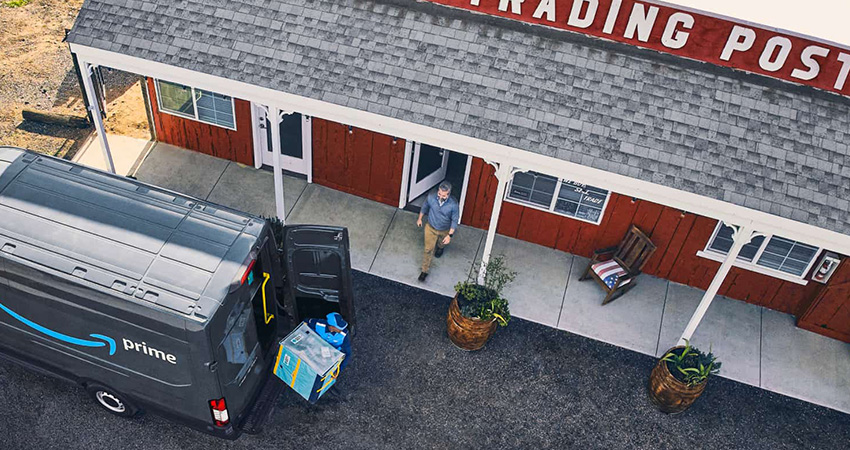Logistics experts had mostly positive reactions to Amazon Hub Delivery, which enlists local businesses to earn extra money by making nearby deliveries in their spare time. Amazon is hoping to have 2,300 businesses recruited by the end of 2023 as it builds scale.
At a cost to Amazon of about $2.50 a piece per Axios’ estimate and no overhead, it’s hard to imagine Hub being a more expensive proposition than the DSP program, with most seeing it as a more economical option. It also allows Amazon to divert volume from the U.S. Postal Service and continue its wind-down with UPS, while lessening exposure to union labor issues as small business owners would not be organizing.
Marek Rózycki, a managing partner with Last Mile Experts, said a large, low-cost subcontracted network like Hub Delivery with no overhead will allow Amazon to better compete with last-mile services at Walmart or Target.
“It makes lot of sense, probably cheaper and more efficient than couriers,” Rózycki said. “And they’re under a lot of cost pressure in their logistics network. It allows them to pull more volume from UPS and gives them more control.”
He likened Hub to the concept of “lifestyle couriers,” where someone who’s retired or on a flex schedule delivers to an area and residents they’re familiar with. “It allows Amazon to pull volume from carriers, and gives them more control, so it works for those very reasons,” Rózycki said. “They secure more capacity in house without fixed costs and using independent SMBs.”
Marc Wulfraat, president of MWPVL International, said Amazon has been testing this concept for some time, linehauling packages from sortation centers to small, inexpensive hubs in sparsely populated areas, then finding local SMBs already making home deliveries. The drivers picked up extra cash, and Amazon expanded its insourced transportation network – a win-win.
“I would think this remains the majority of what they are trying to accomplish because it allows them to operate with a single schedule rather than having to meet the deadline requirements of external carriers such as USPS,” Wulfraat said. “It also enables faster, cheaper deliveries to rural areas since they can offer weekend delivery capability without additional charges being applied.”
He wondered, however, why Amazon would use Hub Delivery in population centers, as it calls for in its blog post announcement. “My conjecture is that they may need resources to augment their own DSP network particularly during Q4, or that they want to use these partners as a lower cost, better quality alternative than Amazon Flex drivers,” Wulfraat said. “Or they may be seeking to move more package volume without the capex of building out as many delivery stations.”
Dean Maciuba, managing partner USA for Crossroads Parcel Consulting, said there was a bit of an “image problem” with the branded trucks DSPs indirectly lease through Amazon. “The DSPs don’t take care of them very well because they don’t own them, so the trucks look horrible,” Maciuba said. “Hub delivery vehicles will not be mobile billboards for Amazon, projecting a bad image like the DSP ones.”
Satish Jindel, president of data analysis and consulting firm Shipmatrix, said Hub Delivery didn’t make sense given lower ecommerce demand and DSPs cutting back on the number of drivers and packages.
“But if Amazon, instead of a DSP has a business owner on their way home delivering a few scattered packages in neighborhoods where (Amazon doesn’t) have density, in that very limited scope it makes sense,” Jindel said. “They have great data on where and how packages need to be delivered.”

